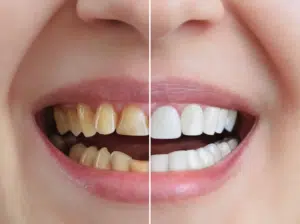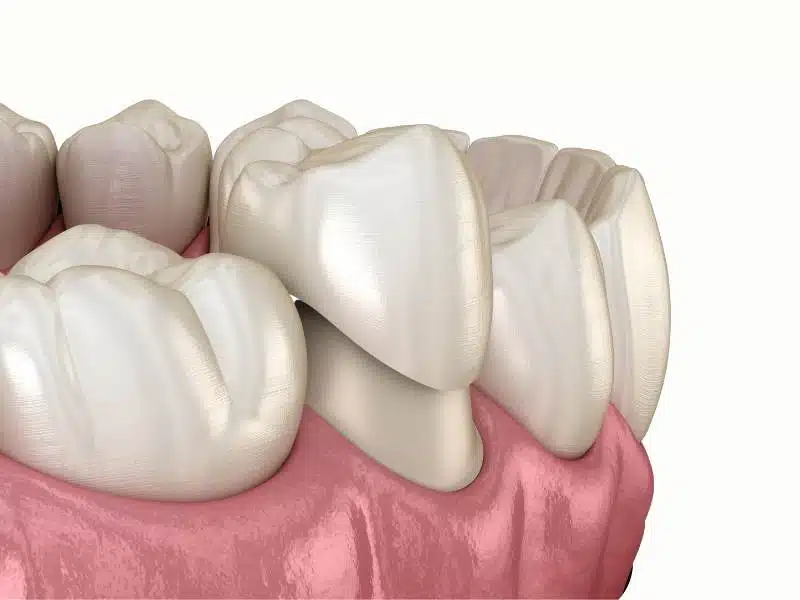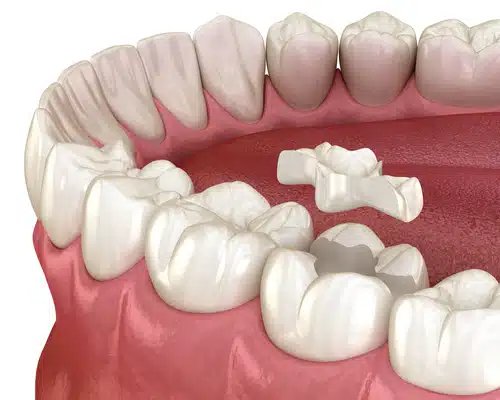 Exquisitely Crafted Dental Restorations to Repair Damaged Teeth
Exquisitely Crafted Dental Restorations to Repair Damaged Teeth
If your tooth has sustained significant structural damage, or if you have a cavity that is too extensive for a dental filling alone, Scott Dooley Dentistry offer several larger restorations to meet your needs. Dental crowns, inlays, and onlays are available in a range of materials, and our lab will carefully fabricate your restoration to match your smile and maintain your healthy bite alignment.
Dental Crowns in Garland, TX
What is a Dental Crown?
A dental crown is a tooth-shaped “cap” that is placed over a tooth. It covers the tooth to restore its shape, size, strength, and improve its appearance. Crowns, when cemented into place, fully encase the entire visible portion of a tooth that lies at and above the gum line.
When Would a Crown be Recommended?
A crown may be recommended by our dentist in Garland, TX, to:
- Protect a weak tooth from breaking or to hold together parts of a cracked tooth.
- Restore an already broken tooth or a tooth that has been severely worn down.
- Cover and support a tooth with a large filling when there isn’t a lot of teeth left.
- Hold a dental bridge in place.
- Cover misshapened or severely discolored teeth.
- Cover a dental implant.
- Make a cosmetic modification.
Benefits of a Dental Crown
Dental crowns offer several benefits:
- Restoration of Function: They restore the strength, functionality, and appearance of a damaged tooth.
- Durability: Crowns are durable and can last many years with proper care.
- Aesthetic Improvement: They can significantly improve the appearance of teeth.
- Protection: Crowns protect the underlying tooth from further decay, infection, and damage.
Inlays and Onlays in Garland, TX
What are Inlays and Onlays?
Inlays and onlays are types of dental restorations used to repair rear teeth with mild to moderate decay or fractured teeth where there is not enough damage to require a crown. An inlay is placed directly onto the tooth surface if the tooth cusps are not damaged. An onlay is used when the damage is more extensive.
When Would Dr. Dooley Recommend Inlays and Onlays?
Dr. Dooley might recommend inlays and onlays when:
- The tooth structure is too damaged for a filling but not damaged enough for a crown.
- There’s a need to conserve as much of the natural tooth as possible.
- The tooth has decay or damage lying within its cusps.
- There’s a need for a more durable and long-lasting solution than a filling.
Benefits of Inlays and Onlays
- Preservation of Tooth Structure: They require less tooth removal than crowns.
- Durability: Made from strong, hard-wearing materials that last up to 30 years.
- Aesthetics: Can be made to match natural tooth color.
- Fit and Stability: They provide a better fit and are more stable than fillings.
- Protection: Help to strengthen teeth and prevent further decay or damage.
What To Expect When Getting Dental Restorations
Dental Crowns Procedure
- Initial Examination: The tooth is examined and dental X-rays are taken to assess the roots of the tooth and surrounding bone.
- Tooth Preparation: The tooth is reshaped to make room for the crown. Your soft and hard tissues will be numb during this process, so you should feel experience minimal discomfort, if any. By removing damaged material, Dr. Dooley can create a stable foundation for your restoration and make sure that your crown does not affect the balance of your bite. If there is extensive decay or risk of infection, a root canal may be performed.
- Impression Making: Impressions of the tooth are taken to create a custom crown. The color of the crown is matched to the natural teeth.
- Temporary Crown: A temporary crown is placed while the permanent crown is made.
- Permanent Crown Placement: During a second visit, the temporary crown is removed, and the permanent crown is adjusted and cemented into place.
Inlays and Onlays Procedure
- Tooth Cleaning and Preparation: Similar to crowns, the tooth is cleaned and prepared. Damaged or decayed areas are removed.
- Impressions: Impressions are made for the inlay or onlay.
- Temporary Filling: A temporary filling is placed by our Garland dentist while the inlay or onlay is fabricated.
- Fitting and Bonding: The inlay or onlay is then fitted and bonded to the tooth. Adjustments are made to ensure a comfortable and accurate fit.
The Benefits of These Restorations
We offer an array of restorative materials, and we will choose the type that suits your needs, goals and budget. Your restoration may be made from metal, porcelain-fused-to-metal, all-porcelain, or advanced zirconia. Porcelain and zirconia will provide the most natural results, though sometimes, metal may be more preferable, especially for back teeth. No matter what material you select, when you care for your teeth properly, your crown, inlay, or onlay could last the rest of your life.
Frequently Asked Questions
Q: Are dental crowns, inlays, or onlays better than fillings?
A: They are often more durable and provide better protection for damaged teeth. They are preferable for larger restorations where a filling might not provide adequate strength.
Q: Can dental restorations come loose or get infected?
A: While rare, they can come loose or get damaged. Regular dental check-ups with your Garland dentist can help detect such issues early. Good oral hygiene is crucial to prevent infections.
Q: What materials are used?
A: They can be made from various materials, including porcelain, ceramic, gold, and composite resin. The choice of material depends on the tooth’s location, the patient’s bite, and aesthetic considerations.
Q: Is there any special care required for dental restorations?
A: Apart from regular brushing and flossing, it’s important to avoid chewing hard foods or ice directly on the restored teeth to prevent damage.
Q: How long does it take to get used to a crown, inlay, or onlay?
A: It usually takes only a few days to get accustomed to the new restoration. If you experience ongoing discomfort or bite issues, you should consult your dentist.
Q: Can crowns, inlays, or onlays stain like natural teeth?
A: Porcelain and ceramic crowns, inlays, and onlays are resistant to staining. However, maintaining good oral hygiene and avoiding stain-causing foods and drinks is advisable.
Q: What happens if I delay getting dental restorations?
A: Delaying treatment can lead to further decay, pain, and the potential need for more invasive procedures such as root canal therapy or extraction.
Q: Are there any risks associated with these procedures?
A: The risks are minimal but can include tooth sensitivity, allergic reactions to materials, or issues with the fit of the restoration. Regular follow-ups can help mitigate these risks.
Restore Your Smile With Inlays, Onlays, and Dental Crowns in Garland, TX
Restoring your tooth is a customized process, and may require a full dental crown or an inlay or onlay. To find out which option is best for your situation, call Scott Dooley Dentistry in Garland, TX, today at 972-495-8100. We also proudly serve the residents of Dallas, Richardson, Wylie, Sachse, and all surrounding communities.


 Exquisitely Crafted Dental Restorations to Repair Damaged Teeth
Exquisitely Crafted Dental Restorations to Repair Damaged Teeth
